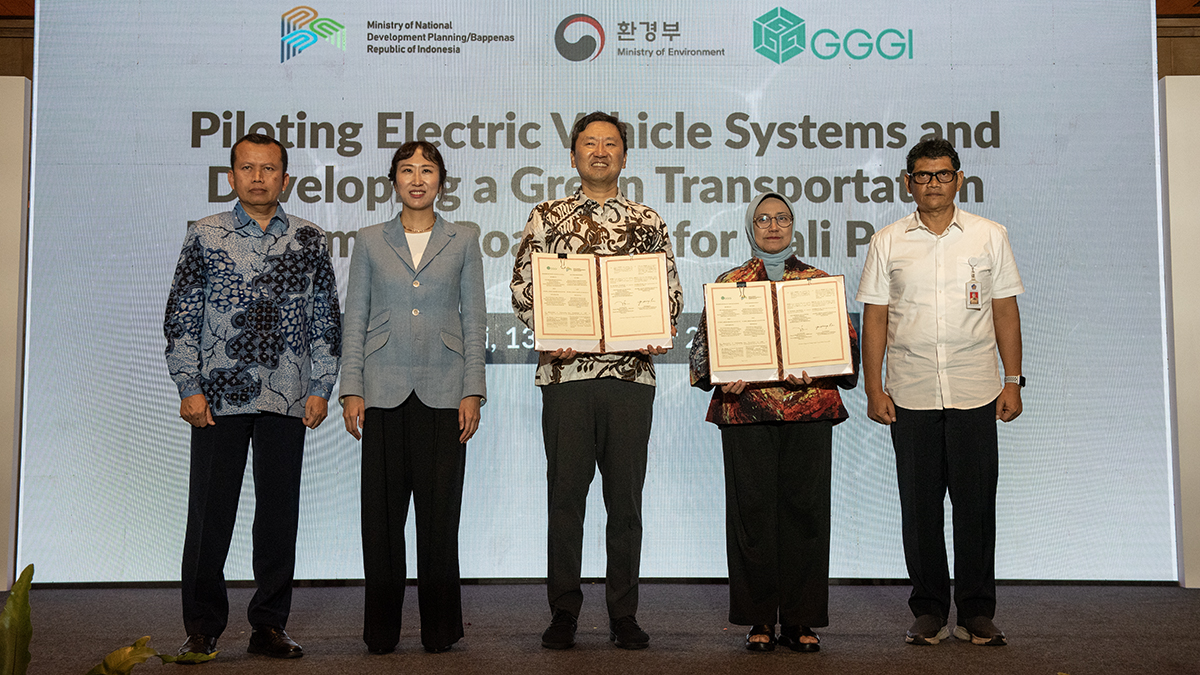Green growth: Towards a prosperous Central Kalimantan
Over the past few years, lengthy drought as well as forest and peat fires have become a new environmental challenge in Central Kalimantan.
In 2014, the province contained no less than 1,041 fire hotspots, most of them forest and peat fires. As of September this year, over 740 hotspots were detected in the province.
In addition to the strong El Nina phenomenon, many experts have predicted that this condition will be worse than that in 1997-1998, commonly touted as the worst forest fire year on recent history.
Undeniably, one of the causes of forest and peat fires is the conversion of land function, including changing forest and water catchment areas so they can be used for plantations, settlements and other functions.
Dry peat forests are vulnerable to fire, especially when their channels have been drained for plantations. Unsustainable development plans allow this to happen because of the lack of mapping of areas of risk identification and mitigation, and other related issues.
Since 2005, the Central Kalimantan government has designed and implemented a number of initiatives, policies and regulations related to the economy.
Some of these initiatives have focused primarily on enhancing economic growth, while others focus on multiple sectors. For its economy, the approach taken by the Central Kalimantan government is ‘green growth’.
The approach has arisen from an understanding of the high economic and social value of natural assets, which must be protected to ensure the survival of all living beings that depend on them.
This can be done by boosting growth through smart policies that drive green investment, innovative efficient technologies and sustainable practices.
Through this approach, Central Kalimantan has tried to balance the protection aspect with the utilization of natural resources to help ensure a more equitable distribution of economic benefits.
Green growth also supports the people of Central Kalimantan in carefully considering the multiple physical, social and economic objectives and targets in the area’s development. The Green Growth concept has been incorporated into the province’s 2005-2010 and 2010-2015 Medium Term Development Plans (RPJMD). The nine primary focuses of green growth in Central Kalimantan include spatial planning, restoration of degraded land, management of water resources, provision of clean water and sanitation systems, improved air quality and waste management and mitigation of climate change.
Since 2014, the strategy has been adopted in Murung Raya and Pulang Pisau regencies. In Murung Raya, the largest regency covering 23,700 square meters, this strategy focuses on forestry, mining, plantation and energy.
With abundant water resources, Murung Raya has established micro-hydro power plants that improved public electrification by 33.8 percent in 2012 and a projected 80 percent in 2016.
In forestry, the ‘green growth’ strategy aims to ensure locals sustainably manage forests. Thus, the forestry industry is able to attract investment, create employment, reduce social conflicts, maintain carbon stocks and biodiversity as well as improve access to global markets.
In Pulang Pisang, the strategy benefits the area’s largest rivers; the Kahajan and Sebangau. The potential of water resources for agriculture and fisheries is maintained by protection of resources involving all concerned stakeholders, including communities and businesses.
Conservation of rivers and turning them into primary locations for fish farming will help prevent the conversion of mangrove forests in the coastal areas into fish ponds, as that would have significant negative impacts on the environment.
One of the partners of Central Kalimantan in green economic growth since 2013 is the Global Green Growth Institute (GGGI), which also helps the government explore ideas and solutions to tackle land and forest fires. So far, there has been three initiatives developed in Central Kalimantan.
The first one has been to make a production forest unit in Murung Raya and Pulang Pisau that engages both government and private parties to manage degraded peatlands in a sustainable manner.
The second one is to promote ‘climate smart agriculture’, including the opening of new plantations using non-burning techniques.
Under this scheme land does not need to be entirely cleaned up, and cut-down trees do not need to be burned, instead they remain on the ground to decompose and later become compost.
The third aspect is a hydrology rehabilitation of peatlands to make them productive, damp again and not prone to fire. One way to achieve this is by blocking and adding water to the canal so that the level of water rises and dampens the peatlands. Funds have been allocated for those three activities from the short-term development plan of Central Kalimantan.
The programs and activities in the Green Growth strategy will not immediately solve the problems of forest and peatland fires in Central Kalimantan. But at least, GGGI initiatives have identified from the beginning the parties that could be involved in strategies to deal with forest fires, including government agencies, the public and non-government organizations and communities.
This holistic approach allows all parties to identify each of their roles in addressing forest and peatland fire issues according to their respective capacities.
The writer is the head of Regional Development Planning Agency (Bappeda) of Central Kalimantan. The views expressed are his own.
Source : Jakarta Post




